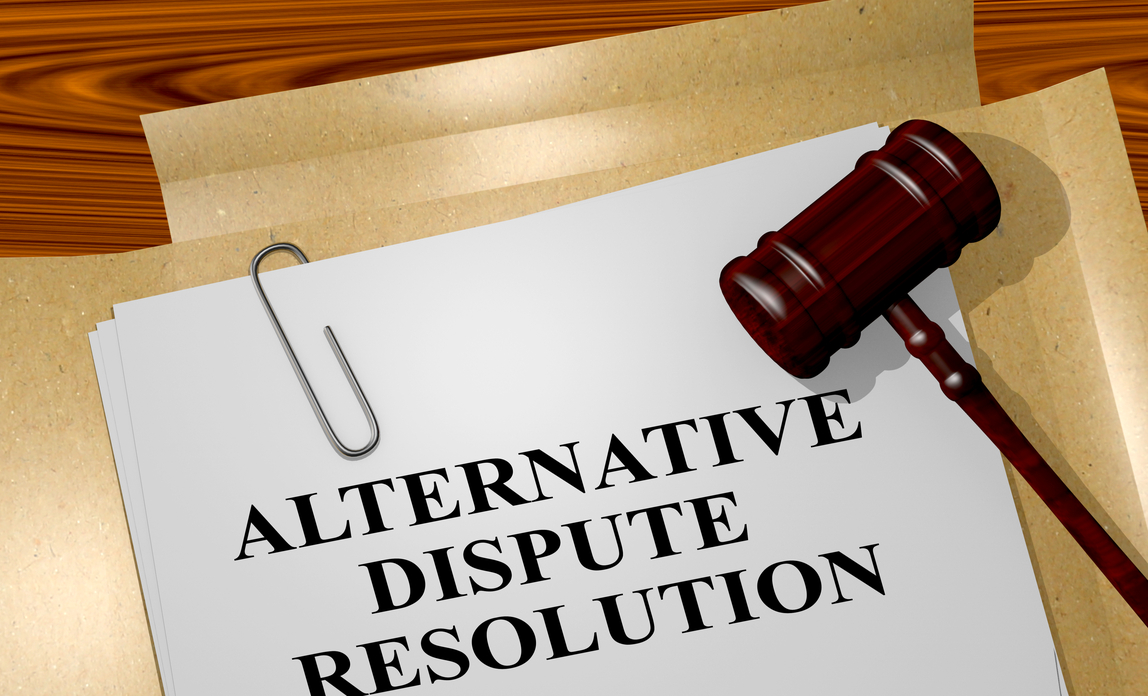
Flooding can upend homes and businesses in a single night, but the real test begins when you start the claims process. Between federal programs, private insurers, and strict deadlines, even well-prepared property owners can feel overwhelmed by the fine print. People often look for quick answers that promise “Tap here” simplicity, yet flood recovery requires careful documentation, a clear plan, and, at times, legal support. This guide explains how to file under FEMA’s National Flood Insurance Program (NFIP) and private policies, what evidence moves claims forward, and how to respond when your payment comes up short. You’ll also learn where coverage limits apply, how adjusters reach their numbers, and when a Texas Flood Damage Lawyer can turn a stalled claim into fair compensation.
Filing Claims Under FEMA and Private Flood Insurance Policies
The first step after a flood is to notify your insurer, whether you carry a FEMA-backed NFIP policy or a private flood policy. NFIP claims are administered by FEMA but generally filed through your Write-Your-Own (WYO) insurer or NFIP Direct; they require a signed and sworn Proof of Loss within 60 days of the flood, unless FEMA extends the deadline for a specific event. Private flood policies often mirror these requirements but can vary in timelines, deductibles, and supplemental claim procedures. Keep every communication in writing, save your claim number, and begin mitigation immediately to avoid avoidable damage and disputes. If questions arise about deadlines or scope, consult a Texas Flood Damage Lawyer early to preserve your rights and avoid unintentional forfeitures.
Steps to initiate your claim efficiently
- Report your loss within 24–48 hours and request your adjuster’s name and inspection date.
- Photograph and video every room before moving anything; capture water lines and debris patterns.
- Separate damaged from undamaged items, but do not discard materials until the adjuster authorizes it.
- Save invoices and logs for emergency mitigation—pumps, tarps, dehumidifiers, and debris removal.
- Prepare a preliminary list of damaged property with approximate ages, models, and original costs.
After the initial inspection, you may receive an advance to help with immediate recovery. Review the adjuster’s scope of loss carefully and compare it against your own inventory and contractor estimates. Under the NFIP, you can submit supplemental Proofs of Loss if you discover additional damage or disagree with early numbers; do so before the applicable deadline. If a written denial or partial denial arrives, NFIP policyholders can file a FEMA appeal within 60 days or bring suit in federal court within one year of the denial letter. Private policyholders, by contrast, must follow their policy’s internal deadlines and may also have appraisal or arbitration options, which a Texas Flood Damage Lawyer can evaluate with you.
Key Documentation Needed to Support Flood Damage Claims
Insurance is evidence-driven, and strong documentation is the difference between a smooth payment and a slow fight. Begin with wide-angle and close-up photos, plus videos that pan all affected rooms, exterior elevations, and flood lines. Catalog every damaged item with brand, model, serial number (if available), purchase date, and estimated value; include links or receipts that show comparables if you lack original records. Keep a daily log that tracks who did what and when—adjuster visits, contractor inspections, and moisture readings. If you’re tempted by shortcuts promising “Tap here” solutions, remember that insurers pay based on verifiable facts you can present, not assumptions about loss.
A practical documentation checklist
- Photo and video evidence: before removal of materials; include timestamps and room labels.
- Itemized contents list: furniture, electronics, appliances, clothing, and specialty goods.
- Structural damage notes: foundation cracks, wall bowing, subfloor warping, roof leaks from wind-driven rain.
- Professional reports: contractor scopes, engineer assessments, and indoor air quality or mold evaluations.
- Mitigation records: equipment rental receipts, service invoices, disposal tickets, and drying logs.
- Communication archive: emails, claim notes, texts, and letters with adjusters and contractors.
Consider third-party measurements when the scope is contested. Moisture-mapping and thermal imaging help prove how far water traveled, which justifies opening walls, removing insulation, or replacing cabinets and flooring. Independent contractors can produce room-by-room estimates using industry software, giving you a credible counterweight to an insurer’s initial scope. For complex losses or high-value contents, a Texas Flood Damage Lawyer can coordinate forensic inventory specialists to substantiate values and accelerate negotiations.
Common Reasons for Claim Denials and Underpayments
Denials and underpayments often stem from technicalities, not just disagreements about damage. Common issues include late or incomplete Proofs of Loss, insufficient photos, or missing line items for hidden damage like saturated insulation or compromised subfloors. Policy exclusions also trigger denials—earth movement, pre-existing deterioration, or sewer backups that are not caused by a general condition of flooding. Another frequent problem is valuation: depreciation may be overstated, or the estimate may skip code-required upgrades or necessary mold remediation. Policy lapses, missed premium payments, and unpermitted work can complicate otherwise valid claims.
How to respond when your payment is too low
Start with a written request for reinspection and include your detailed scope of loss, photos, and contractor estimates. For NFIP claims, submit a supplemental Proof of Loss supporting any additional amounts you’re seeking, and keep an eye on the 60-day appeal window after any denial. Private flood policies may offer appraisal or arbitration; if so, consider whether those mechanisms favor a faster, fair result based on the facts of your case. If informal efforts stall, engage a Texas Flood Damage Lawyer to analyze whether the carrier’s position conflicts with policy language or claims-handling standards. Quick fixes that suggest “Tap here” rarely resolve structural disagreements, but organized evidence and deadline-focused advocacy often do.
Insurers respond to precision, so define every affected component: linear feet of baseboards, square footage of flooring, cabinet construction, and material grades. Where coverage allows, pursue code upgrades and necessary mold protocols to protect long-term habitability. Track your communication timeline, as responsiveness can influence both credibility and, in private claims, statutory penalty interest if the insurer drags its feet. With NFIP, the path is more rigid, but thorough supplementation and timely appeals significantly improve outcomes.
Understanding Coverage Limits Under the NFIP and Texas Law
Knowing what your policy will and won’t pay for prevents unpleasant surprises during rebuild. Under the NFIP, residential building coverage generally caps at $250,000, with contents up to $100,000; businesses may carry up to $500,000 for buildings and $500,000 for contents. Basement coverage is limited—finishes and personal property below grade are largely excluded, though essential equipment like electrical panels and furnaces may be included. NFIP does not cover Additional Living Expenses (ALE), so temporary housing costs fall outside the policy; some private flood policies do include ALE, depending on the contract. Replacement cost for buildings under NFIP is available only for qualifying primary single-family homes insured to at least 80% of replacement cost (or the policy maximum), while contents are always paid at Actual Cash Value.
Practical implications to budget and plan correctly
- Deductibles apply separately to building and contents, affecting your out-of-pocket position.
- Increased Cost of Compliance (ICC) coverage—up to $30,000 under NFIP—can help elevate or flood-proof structures after substantial damage determinations.
- Code upgrades are not universally covered; check whether your policy explicitly includes ordinance or law benefits.
- Private policies vary widely; verify ALE, pool equipment coverage, and finished-basement terms before assuming they’re included.
Texas law provides consumer protections for private insurers, including claims-handling timelines and potential statutory interest for late payment under the Texas Prompt Payment of Claims Act. However, NFIP claims are governed by federal rules and are generally not subject to those state penalties. That distinction matters during negotiation: a private insurer may face leverage under state law, while an NFIP claim requires strict compliance with federal deadlines and procedures. A Texas Flood Damage Lawyer can explain how these frameworks apply to your policy, your deadlines, and your best route to a complete recovery budget.
How Legal Counsel Helps Resolve Insurance Disputes
Legal support can transform a contentious claim into a structured, evidence-based negotiation. Attorneys start by reviewing your policy, endorsements, and denial letters to pinpoint coverage triggers, exclusions, and valuation methods. They organize sworn statements and Proofs of Loss, coordinate independent experts, and frame the claim with the precise language carriers look for when authorizing payment. In private policy disputes, counsel leverages Texas claims statutes—demanding timely responses, fair settlement offers, and interest when deadlines are missed. In NFIP cases, a Texas Flood Damage Lawyer ensures appeals, supplements, and any federal court filing occur within strict time bars.
When to bring in counsel and what to expect
- Early involvement helps preserve evidence and avoid missed deadlines that can’t be fixed later.
- If you receive a partial or total denial, request a written explanation and share it with counsel promptly.
- Lawyers can recommend when to pursue appraisal (if available), reinspection, formal appeal, or litigation.
- Fee structures vary; many firms offer contingency arrangements, advancing case costs for experts and filings.
The most valuable legal work often happens behind the scenes: correcting estimate line items, adding code upgrades, clarifying scope for water intrusion, and addressing mold remediation standards. Counsel can also coordinate engineers to address causation disputes, like soil movement versus hydrostatic pressure, that often drive wrongful denials. Clear, professional advocacy keeps carriers focused on policy language and credible evidence rather than speculation. With a Texas Flood Damage Lawyer guiding the process, you gain a negotiation strategy that matches the insurer’s playbook step for step.
The Role of Adjusters and Independent Assessments in Recovery
Adjusters set the tone of the claim, but their estimates are not the final word. NFIP and many private insurers rely on independent adjusters who juggle heavy caseloads during catastrophes, which can lead to rushed scopes or missed items. It’s your responsibility to walk the adjuster through every room, point out hidden concerns, and share your inventory and contractor estimates. Public adjusters, hired by policyholders, can help prepare detailed claims and negotiate scopes, though their fees come from your recovery and terms should be reviewed carefully. Engineers and industrial hygienists also play key roles—validating structural integrity, documenting microbial growth, and establishing the necessity of specific repairs.
Getting to a reliable scope of loss
- Request the adjuster’s written scope and unit pricing; compare to contractor estimates line by line.
- Ask for reinspection if materials are opened and reveal new damage (e.g., wet insulation, warped studs).
- Use moisture maps and infrared images to justify demolition beyond the visible water line.
- If estimates are far apart, consider independent experts and, for private policies, appraisal where allowed.
Remember that communication style matters: organize your evidence and questions, and keep meetings efficient and on-point. If you’re pushed toward quick fixes or vague promises—like generic messages that say “Tap here” for a one-size-fits-all remedy—redirect the conversation to the specifics of your property and policy. When disagreements persist, a Texas Flood Damage Lawyer can coordinate experts, press for written explanations, and formalize disputes to protect your rights. The goal is a defendable scope that fully addresses damage, necessary mitigation, and code compliance.
Timely Action Steps for Rebuilding After Severe Flood Losses
Recovery moves fastest when you pair immediate safety measures with a structured plan. In the first 48 hours, prioritize health: shut off electricity where water intruded, wear protective gear, and ventilate to reduce mold risk. Begin mitigation promptly—pump out standing water, remove wet materials, and set up dehumidifiers—then document every step with photos and logs. Confirm permit requirements for demolition and rebuild, especially if your community enforces substantial damage rules that trigger elevation or flood-proofing. Coordinate with your contractor on long-lead items like cabinetry, electrical panels, and HVAC components to avoid supply chain delays.
A practical timeline for forward momentum
- Days 1–3: Secure property, document damage, begin mitigation, file your claim, and schedule inspection.
- Days 4–10: Obtain contractor estimates, engineer or hygienist reports if needed, and submit initial scopes.
- Weeks 2–4: Review adjuster’s estimate, request reinspection if gaps exist, and submit supplements.
- Month 1–2: Finalize permits, confirm materials, and establish a rebuild schedule tied to approved payments.
- Ongoing: Track expenses, change orders, and communications; upload documents to your insurer’s portal regularly.
Be mindful of non-insurance resources. SBA disaster loans can bridge gaps even if you carry flood insurance, but do not duplicate benefits; coordinate timing and documentation carefully. Local buyout or hazard-mitigation programs may reduce future risk, while NFIP’s ICC coverage can contribute to elevation or other code compliance after a substantial damage determination. For disputes that slow the flow of funds, a Texas Flood Damage Lawyer can escalate dialogue and secure the clarity needed to keep crews working. When you need a clear nudge to move through the next step, resist vague prompts that say “Tap here” and instead return to your checklist, deadlines, and evidence—those are the levers that turn a claim into a rebuild.








